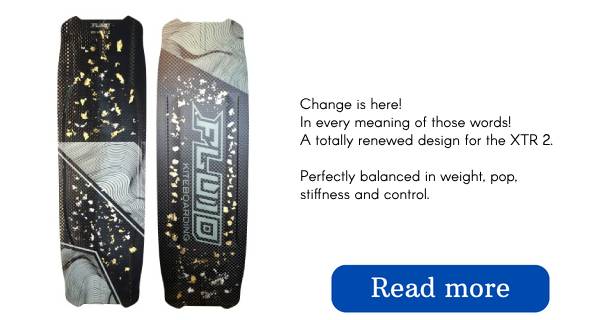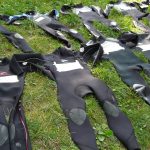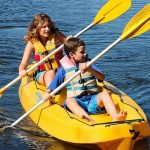Is selecting a PFD (personal flotation device) similar to picking out a shirt? Just pick one that looks good? The prospect of doing that is very appealing, however, it is more than likely to make you displeased and discontented with your life jacket, making you reluctant to put it on.
Our top tester in this area has been an experienced paddler since she was little, giving her full recognition of what stands out between a PFD that will be comfortable to wear and one that will inevitably remain in the boat.
When selecting a piece of equipment that has been made to potentially safeguard your wellbeing, it is essential to pick the correct one. The ultimate PFD is the one you have on when it matters most, like when your life is in danger!
In this guide, we’ll explore all the possibilities and help you choose the life jacket that is the most suitable for your preferred water-related activity.
Required by Law
For every individual on a recreational boat, there needs to be an appropriate US Coast Guard-accepted life vest that is fitting well. This holds true for long journeys on the sea equally as much for swift motor boats, kayaks, or paddleboards.
Legally speaking, wearing a life jacket is not a requirement, but it is still recommended. Based on research conducted by the US Coast Guard and the American Boating Association, the majority of drownings happen when the individual is not wearing a life jacket.
It is especially disturbing to consider that more than half of drownings happen close to the beach when life preservers are on the boat but not being worn. Why would you leave off wearing your life jacket when operating a vessel?
Donning a life vest is just as important as putting your seatbelt on when getting in a vehicle, similar to how a skydiver wears their parachute, or a football player wears their helmet.
Types of PFDs
Do you understand which type of life jacket is appropriate for you? The US Coast Guard has identified five kinds of ships according to the applications they are best suited for.
Type 1
This type of life jacket, called an Off-Shore Life Jacket, offers the highest amount of flotation. These PFD’s are created to be used in all kinds of conditions, including choppy seas and places that may not have quick access to assistance.
They will also flip a person without consciousness face-up in the water. These are optimal for huge vessels and ships traveling far from land.
Type 2
This style of life preserver, known as a Near-Shore Buoyancy Vest, is designed for safe use in tranquil, inland bodies of water where it will be easy to be rescued quickly. These vests will cause most unconscious people wearing them to end up in the face-up position, though not as strongly as with a Type I vest.
This type of life jacket is commonly seen on smaller vessels, cruise ships, and might even be distributed with recreational boat rentals.
Type 3
Floatation aids of the Type III variety are best suited for placid, inland bodies of water wherein rescue can be easily and quickly provided. The user might need to tilt their head back in order to keep their face in an upward position.
These items are extremely comfortable to be worn for prolonged periods and for active activities. This is the most common selection you can find in stores that specialize in outdoor supplies and activities, like fishing, kayaking, or water skiing.
Type 4
Throwable Devices can be used anywhere. Boats of a certain length (normally over 16 feet, except for kayaks and canoes) need to have at least one of the specified items. They include cushions, rings, and buoys.
Type 5
Devices of type V are specifically made to be applied to unique cases. Only the intended usage of these products is authorized; they will provide the same protection as a Type I, II, or III personal flotation device if utilized properly.
It’s essential, if the label states “licensed just when worn,” that it is put on to make you legitimate and uphold your safety. Some Type V Personal Flotation Devices could be beneficial in preventing hypothermia, while there are also models specifically designed for sailing.
Additionally, they can either be blown up manually or using an automatic inflator. Inflatable cinches worn for standup paddleboarding on calm water are an illustration of this category.
Unless you’re a ship captain in a business or leading a massive ship on a deep-sea voyage, you probably want a Type III life preserver or a Type V flotation aid that can also be used as a Type III.
Type III garments provide the ultimate comfortability and can be worn for any outdoor pursuit, such as fishing, wakeboarding, kayaking or paddleboarding.
We surveyed the types of Personal Flotation Devices during recreational activities where paddling was done, and concentrated primarily on those activities.
Jargon Alert: Life Jacket vs. PFD
How much jargon is accurate with respect to PFDs and life jackets? A life jacket is a type of personal flotation device (PFD) that has been designed to turn an individual face up in the water and protect them, even if they were unconscious or in tumultuous waters.
A Personal Flotation Device will enable a person who is conscious to remain on the surface of the water in placid conditions. The words “personal flotation device” can be used to describe any type of buoyancy aid that one can wear for extra buoyancy.
In other words, while all personal flotation devices are life jackets by definition, not all life jackets are necessarily PFDs. In terms that are easy to understand, the Coast Guard uses the description ‘life jacket’ when referring to personal flotation devices that are meant to be worn, while ‘PFD’ is used for more technical purposes.
In the end, it probably doesn’t matter which phrase you use because people should understand what you are referring to.
Main Kinds Of Life Jackets (And How They Work)
Standard
An ordinary life jacket is usually a Personal Flotation Device (PFD) that is naturally buoyant. This implies that it is manufactured from components that are inherently buoyant, typically foam, so as to offer instant flotation when entering the water.
These items would be perfect for people of all ages and swimming ability levels, including kids and those who can’t swim.
Inflatable
These life jackets will only be able to keep somebody above the water when they are filled with air. Inflatable Personal Flotation Devices (PFDs) typically come in two forms – manual and automatic.
Automatic flotation devices are engineered to blow up instantly when one comes in contact with water. They usually have an inflation device with either a manual mouth tube or a pull cord.
Packable Personal Flotation Devices that can be inflated by hand are intended to be inflated when immersed in the water, usually by pulling a lanyard.
Inflatable personal flotation devices often come with a CO2 cylinder that must be swapped out after each puff up.
Inflatable personal flotation devices should not be used by people under 16, and are not recommended for people who cannot swim.
Hybrid
Life jackets that are a mix of materials naturally providing buoyancy along with an inflatable component are available.
This implies that they are able to give a certain amount of initial buoyancy prior to the inflation system turning on, providing the advantages of both traditional and inflatable Personal Flotation Devices.
Who are PFDs For and when to use?
Generally, life jackets (PFDs) should be worn by anyone who is close to or in the water. They can provide protection for people engaging in different water sports.
Kayaks
Personal Flotation Devices are a must-have when kayaking, even when the waters are tranquil.
You may want to consider having bigger arm openings to make it simpler for you to paddle, as well as a back design that is ample and enables you to relax in your kayak seat.
Kayak Fishing
Personal Flotation Devices can be essential components of any equipment you bring along for kayak fishing, much like they are for recreational kayaking.
One possible paraphrase would be: If you’re fishing from a kayak, a low profile life jacket may be a better option as it allows for more flexibility to both cast and paddle.
Life preservers with compartments and D-ring attachments could be beneficial for kayak angling, delivering increased room for equipment.
Women
Life jackets for women have been designed to accommodate the frame of the female figure. These items of clothing tend to be designed to be more petite and follow the contours of a female’s figure.
This can make them secure more firmly, thus increasing your safety if you have to be rescued.
Female life preservers typically feature built-in cupped areas for enhanced support and a more agreeable wear.
Big And Tall People
Vest sized to accommodate bigger builds will typically have a bigger circumference around the chest. However, PFDs are also inclined to have various other traits that can make them more pleasant to put on.
Certain aspects of the product may include extending panels, making the life jacket adapt to your movements. It may be beneficial to have several settings that can be customized, allowing you to adjust the PFD to fit your body shape.
Kids
Young people are usually obligated to strap on life preservers that are naturally buoyant when they are in aquatic environments. Child life preservers are usually assessed based on the weight of the individual, rather than the size of their chest.
Some models may be able to provide you with an estimated chest size in addition to the suggested weight.
Usually, there are two versions available for children; one specifically designed for kids and the other for young people. Personal floatation devices designed for children typically contain added features such as grab handles and crotch straps.
Infants And Babies
Infant life jackets tend to be measured according to weight, similarly as those designed for children, and are generally intended for babies and toddlers in the 8 to 30 pound range.
Infant life jackets are made to give quick flotation and frequently fashioned to make your child float on the water facing upwards, depending on the special type of life preserver.
Infant life jackets will frequently feature crotch straps and a handle for extra security, as well as a head support for offering more buoyancy.
Dogs
Dog life preservers often have a grip handle on their backside which makes it simpler to take the dog out of the water.
The harnesses will typically come with straps that can be adjusted around the canine’s chest and neck area.
How To Size And Fit A Life Jacket
Life jackets should fit snugly but be comfortable to wear, and should not move up when you lift the straps up on your shoulders.
Step 1: Secure The Life Jacket
Fasten the life vest to yourself with the adjustable straps and zips, if necessary.
Step 2: Make Adjustments
To get a snug fit, you might find it necessary to alter the straps in certain areas. Loosen or tighten as necessary.
Step 3: Lift Up On The Shoulder Straps
It might be beneficial to have someone assist you with this. Grab the shoulder straps of the life vest and lift them up. Your vest should fit snugly around you so that it does not slide up to cover your chin or ears.
If the life vest is moving up too much when you do this, try altering the straps so it fits better. It may be that the life jacket is too large if it keeps going up, and that you need a smaller size.
Fitting For Adults
Life vests for adults are divided into size categories based on the circumference of the chest in the widest part. Typically, the weight of the client should be at least 80 to 90 pounds.
Fitting For Women
Women’s sizes are generally rated by bust size. This is the circumference of the area where your bust is at its largest, and it’s generally bigger than your bra band size.
Fitting For Kids
Personal Flotation Devices for children are typically available in two sizes, which are determined by the weight of the child; child size and youth size. This size is made specifically for children that weigh between 30 and 50 pounds.
Typically, youth size clothing is designed for children between 50 and 90 pounds.
Fitting For Infants
Life preservers for infants are classified by weight, typically for 8-30 pound babies and toddlers.
Fitting For Dogs
Most dog life jackets are usually determined by an animal’s weight, but there are usually guidelines for how long the back should be and how tall the shoulders should be.
Color
Using bright colors can help make you more noticeable when out on the water, which can be of use if you have to be rescued. Certain PFDs will have reflective strips which help make them more noticeable in poor lighting conditions.
Materials
Life preservers can be constructed from various fabrics, such as neoprene, nylon and polyester. PFDs tend to have a close cell foam core, which is what gives them the buoyancy they have naturally.
Pockets
Pockets on personal flotation devices can be useful, particularly for activities such as kayaking, fishing, or paddle boarding where having limited deck space might mean you need to have your smaller items close at hand. They can also come in handy for keeping a whistle, thus providing more security.
in conclusion
A PFD (Personal Flotation Device) should be worn at all times when in any body of water. It is a life preserving device which could possibly save your life in an emergency situation. In numerous situations, you may discover it is required by law to put on a facemask.
A wide variety of sizes, ages, and activities are all consider for the different types of dog collars on the market.
Make sure to ensure your personal floatation device fits the right way and has been approved for the water activity you are doing. Happy paddling!




